#solastalgia art
Explore tagged Tumblr posts
Text

📸 | snapshot
xie lian soft-launches his bf hua cheng and the internet loses it
#hualian#hualian fanart#tgcf#tgcf fanart#tgcf hualian#tgcf xie lian#tgcf hua cheng#tian guan ci fu#heaven official's blessing#modern au#solastalgia art#digital art#illustration
10K notes
·
View notes
Text
"Solastalgia"

I am a patchwork of longing,
woven by hands I’ve forgotten,
threaded with whispers of ash and stars.
A moonlit wound glows within my chest,
its light neither of warmth nor solace,
but a beacon for ghosts
that circle and circle, taunting, endlessly.
I long to break free
to scatter my spirit
like fireflies in a night too dark to name,
to let the raven carry my shadow
to the edges of what could be.
But here I remain,
a still-life of solastalgia,
waiting for the earth to turn softer,
for my roots to find home.
26 notes
·
View notes
Text
i'm looking at the Indigenous history of Sydney as part of uni, and actually, realising how much easy for you to say fits the nostalgia/solastalgia of pre-colonial, pre urbanised country. like it genuinely fits SO WELL. every single line from the misunderstanding and often invisible struggle to 'I'll try and change my ways' (to function within a colonial system, how much of the blame is put on the individual) to the refrain of 'easy for you to say, harder for me to take' to both verses--like the self-deprecating 'i'm headstrong and stubborn and stuck in my ways' which people see and it's easy to internalise, to the 'youth that was stolen and filled with mistakes' which hits so much harder if it's referring to something like the Stolen Generation, still concluding 'i'm overdramatic and drenched in my pain', living in the moments where 'between all the gasping i finally breathe' (is that the person? the land? does it matter?) with 'a darkness that holds me and loves when I bleed, it locks all the doors and it hides all the keys' (oppression and generational trauma do that!) and moving forward to 'what I couldn't see, a glimmer of hope that was staring at me'
#okay i know this is not the perspective from which they were writing#and nor is it mine personally#but i guess it's the mark of good art that it does relate? idk#efyts#official efyts post#easy for you to say#5 seconds of summer#5sos#ashton irwin#luke hemmings#calum hood#michael clifford#5sos5#colonialism#solastalgia#sydney
5 notes
·
View notes
Text

new drawing
https://www.ashleythomas.org/tree-stump
0 notes
Text
2024's albums I like [December 7th, 2024]
It's hard to keep up listening to music that's up-to-date or looking at the new releases in music websites such as Bandcamp, Bleep, Pitchfork, etc.
I'm picky when it comes to choosing the albums I like to listen to. Metal and rock don't excite me so much in 2013 as I keep growing up as a Millennial. Darkwave, ambient and some electronic music are my current obsession. Even though, I'm passable about the rock music, I'm not very enthusiastic of it.
I haven't mentioned the other albums here, but I don't think the ones from Billie Eilish, Taylor Swift, Coldplay or Glass Animals were the best albums they did. If you enjoy and like those albums, that's okay.
If I have something new to post a thread about the newest albums in December, I'll do it. You guys are welcome to share yours.
I wanted to post this thread a little a bit early before this year ends. These are the ones I've been listening to in 2024:
-
Darkwave: Dead Astronauts - Ghosts <3 Feyleux - Midnight Hearts Filmmaker - Grim Encoders (Dark Electro / EBM) NECRO - Into Oblivion Night in Athens - Wasted Reflektions Profit Prison - Gilt Sixth June - Stay! <3 Soror Dolorosa - Mond Sydney Valette - The Healer Electronic music: Erika de Casier - Still Charli XCX - BRAT Bat For Lashes - The Dream of Delphi Skee Mask - Resort Uboa - Impossible Light Kelly Lee Owens - Dreamstate Fennesz - Mosaic (ambient) Old Amica - For alltid (ambient) alva noto - HYbr:ID III (ambient) The Green Kingdom - Arcadian (ambient) / Horizons (ambient)
Other: 070 Shake - Petrichor Arooj Aftab - Night Reign FLO - Access All Areas mk.gee - Two Star & The Dream Police Nessa Barrett - AFTERCARE Tinashe - Quantum Baby The Cure - Songs of a Lost World Wrong Organ - Mouthwashing OST
Honorable mentions / the albums that were okay: (G)I-DLE - 2
Allie X - Girl with No Face (Synthpop)
Ariana Grande - eternal sunshine
Arooj Aftab - Night Reign
Artemas - pretty
Artemas - yustyna
Astrid S - Joyride
BUNT. - Levi Don't Do
Bad Omens - CONCRETE JUNGLE [THE OST]
Bill Ryder-Jones - Iechyd Da
Black Nail Cabaret - Chrysanthemum (Darkwave)
Blisspoint - DOG
Blue Oyster Cult - Ghost Stories
Bolis Pupul - Letter to Yu
Bring Me The Horizon - Post Human: NeX GEn
Bruce Dickinson - The Mandrake Project
C Z A R I N A - Empire
Calignosia - Malpaís
Carlita - Sentimental
Caroline Polachek - Desire, I Want to Turn into You: Everasking Edition
Chelsea Wolfe - She Reaches Out to She Reaches Out to She (Electronic/Goth Rock)
Cigarettes After Sex - X's
Clan Of Xymox - Exodus (Darkwave / Goth Rock)
Disintegration - Shiver in a Weak Light (Post-punk / Synthpop)
Donny Benet - Infinite Desires (Italo-Disco / Synthpop)
Dua Lipa - Radical Optimism
Echoberyl - Through the Chaos (Darkwave)
Elbow - Audio Vertigo
Embedded Figures - 6 Lovers EP (Darkwave)
Eminem - The Death of Slim Shady
Erik Wollo - Solastalgia
FLETCHER - In Search of the Antidote
Father John Misty - Mahashmashana
Filmmaker - Land of Hidden Variables (Darkwave-ish with noise)
Florrie - The Lost Ones
Four Tet - Three
Fred again.. - USB / ten days
Future Islands - People Who Aren't There Anymore
GENDEMA - sassy things
Gente De Zona - Demasiado
Geordie Greep - The New Sound
Glaring - Hope (Darkwave)
Goat - Goat
Golden Apes - Our Ashes at the End of the Day
Greyhaven - Stereo Grief EP
Gruff Rhys - Sadness Sets Me Free
Habitants - Alma
Hainbach - Breve
Houses of Heaven - Within/Without
Hudson Mohawke / Tyga - L'Ecstasy
IAMTHESHADOW - To End What Never Began (Darkwave)
Iglooghost - Tidal Memory Exo
Jacob Collier - Djesse Vol. 4
James Woods / Shooter Jennings - Hear the Thunder Crack
Jamie xx - In Waves
Jlin - Akoma
John Grant - The Art of the Lie
Judas Priest - Invincible Shield
Julia Holter - Something in the Room She Moves
Julian Lage - Speak to Me
KMFDM - LET GO
Kacy Hill - BUG
Kaelan Mikla / Bardi Johannsson - The Phantom Carriage OST
Kali Uchis - Orquideas
Kat Von D - My Side of the Mountain (Synthwave / Synthpop)
Keaton Henson - Somnambulant Cycles (Classical)
Kelly Moran - Moves in the Field (Piano music)
Kendrick Lamar - GNX
Kim Gordon - The Collective
Kinoteki - Faith and the Vessel
L'Ame Immortelle - Ungelebte Leben (EBM / Synthpop)
LEATHERS - Ultraviolet
Lo Moon - I Wish You Way More than Luck
Locrian - End Terrain
Lucy Rose - This ain't the Way you Go Out
MAX - LOVE IN STEREO
Machine Girl - MG Ultra
Machine Girl - SUPER FREQ EP
Machinedrum - 3FOR82
Male Tears - Paradisco (New Wave / Synthpop)
Mamaleek - Vida Blue
Marika Hackman - Big Sigh
Marilyn Manson - One Assassination Under God - Chapter 1
Mark E Moon - Resist (Darkwave)
Maruja - Connla's Well EP
Mary Lattimore and Walt McClements - Rain on the Road
Matte Blvck - Vows (Dark Electro / Darkwave?)
Meat Beat Manifesto / Merzbow - Extinct
Mega Drive - Memory Disc EP
Micah Dailey-White - Micah
Molchat Doma - Belaya Polosa
Nadine Shah - Filthy Underneath
Nala Sinephro - Endlessness
Night Club - Masochist (Darkawave-ish / Synthwave)
Occams Laser - Headspace (Synthwave)
Ockeroid - Crow Country OST
Opeth - The Last Will and Testament
Owen - The Falls of Sioux
Patricia Taxxon - Bicycle
Paysage D'Hiver - Die Berge
Philippe Blache - Tristitiam Et Metus Tradam Portare Ventis (Dark Ambient / Darkwave-ish)
Photay - Windswept
Pink Milk - Night on Earth (Darkwave / Shoegaze)
Porter Robinson - SMILE! :D
Priest - Dark Pulse (Darkwave / Synthwave)
Qual - Techsick EP
Ravyn Lenae - Bird's Eye
Remi Wolf - Big Ideas
Ritchot Textiles - i
SENTRIES - Snow as a Metaphor for Death
SINE - Luxuria
Sabrina Carpenter - Short N Sweet
Sega Bodega - Dennis
Selofan - Animal Mentality (Post-Punk)
Shygirl - Club Shy
Skee Mask - D
Slash - Orgy of the Damned
Sleeping Rabbits - Breathing Room EP
Snow Strippers - Night Killaz, Vol. 2
Sofi Tukker - BREAD
Soft Kill - Escape Forever
Squarepusher - Dostrotime
St. Vincent - All Born Screaming
TR/ST - Performance (Darkwave / Synthpop)
The Black Monolith - End and Beginning are Dreams
The Fauns - How Lost (Dream Pop / Shoegaze)
The KVB - Tremors
The Spirit of the Beehive - You'll Have to Lose Something
The Sweet Kill - Nowhere
Thief - Bleed, Memory (Darkwave / Experimental) [Prophecy Productions]
Thou - Umbilical
Toby Driver - Raven, I Know that You Can Give Me Anything
Tommy Richman - COYOTE
Tomo Akikawabaya - The Castle II (Darkwave and Minimal wave)
Tusks - Gold
Twenty One Pilots - Clancy
Tyla - Tyla
Tyler, The Creator - CHROMAKOPIA
ULTRA SUNN - US
Ulver - Liminal Animals
Union of Knives - Start from the Endless
VR SEX - Hard Copy
Vampire Weekend - Only God was Above Us
Vince Staples - Dark Times
Waxahatchee - Tigers Blood
Whores - War
Witch of the Vale - 100 Ways to Leave, Vol.1
Xiu Xiu - 13" Frank Beltrame Italian Stiletto with Bison Horn Grips
ben. - subculture
ben. - subculture
i Haxa - i Haxa
r beny - discerned in the fugue of streams
sleepmakeswaves - It's Here, But I have no Names for it
-
Ambient:
Actress - Statik
Alora Crucible - Oak Lace Apparition
Alva Noto - Xerrox Vol. 5 (ambient)
Black Brunswicker - A Moment of Clarity EP
Disasterpeace - Standstill
Duncan Ritchie - Lords of Wolves OST
Faded Cloak - Wrapped in Fog and Freezing Mist
Field Lines Cartographer - Portable Reality Generator
Jogging House - Rendezvous
Lustmord - Much Unseen Is Also Here
Mark Van Hoen - Plan for a Miracle
Nils Frahm - Day
Nonkeen - All Good?
Polypores - There Are Other Worlds
Pye Corner Audio - The Endless Echo
SUSS - Birds & Beasts
Scanner - Alchemeia
Steve Moore - Eye of Horus
The Body / Dis Fig - Orchards of a Futile Heaven
#2024#2024 music#2024 albums#albums#electronic albums#ambient albums#darkwave#darkwave albums#snuron
3 notes
·
View notes
Text

SAM REVELES: SOLASTALGIA
Exhibition at The Hilliard Art Museum.
September 09, 2023 — February 03, 2024
A series of four large canvases produced for the exhibition chart the artist’s affective experience of visiting the Gullfoss Falls in southwest Iceland. These “Golden Falls,” formed by water from the melting Langjökull glacier, create a dramatic spectacle in the Hvitá river canyon. There, waterfalls more than 100 feet in two stages, carve a deep canyon into the landscape. The site was at the epicenter of an international debate in the early 20th century: in 1907, an Englishman attempted to develop a hydroelectric plant fueled by the water’s power.
A local sheep farmer, Tómas Tómasson, refused to sell his land to the businessman; his daughter, Sigríður Tómasdóttir led a 20-year legal battle to protect the land from development. The first three paintings in Reveles’s Gullfoss series take yellow, blue, and red, respectively, as their central color palette, following dynamic lines that suggest the majestic power of their namesake.
The fourth painting in the series is marked by thick strokes of overlapping and slightly translucent colors: peach, yellow, salmon, azure, crimson, a verdant green. Guiding the composition from the corners and edges of the canvas, densely gridded pencil lines undulate and flow into one another, suggestively evoking the many moods of water.
14 notes
·
View notes
Text
Green-House - A Host for All Kinds of Life - studiously avoiding the "New Age" label, they nonetheless represent the best qualities of that much-maligned genre
In an era of rampant, man-made climate chaos, “solastalgia” (the longing and distress experienced by individuals as a response to environmental change/degradation) has emerged as a useful, semi-viral concept — a catch-all term for the pervasive sense that the world as we know it is far from well, and only growing less so. But, for many of us, a problem, a trap, an ineffable hollowness, exists at the very crux of this concept/premise: how can we mourn (or even sense the loss of) that which we have never known? Especially for lifelong urbanites estranged from nature, who nevertheless grasp the severity and complexity of the problem—how might they remember? How might they mourn? Perhaps indirectly—that is to say, in an exploratory and non-dogmatic fashion—Green-House, a project birthed by Olive Ardizoni and now officially a duo project featuring long-time collaborator and confidant, Michael Flanagan, seeks to address this gap in understanding. Six Songs for Invisible Gardens, the debut Green-House EP whose 2020 release coincided with the depths of Covid-19 “lockdown,” responded to the rampant heartsickness of human and plant life, especially in non-rural areas. The packaging of the cassette release famously included wildflower seeds for the listener to scatter. This gesture (at once simple and daring, especially when one considers the logistical element) exists as testament to the sincerity and seriousness of Ardizoni’s convictions. Music for Living Spaces, the first full-length Green-House LP, followed in 2021— a refinement of the formula that enshrined Six Songs as a cult, eco-ambient hit. Out October 13, 2023 on Leaving Records, they have returned with the LP A Host For All Kinds of Life, a third entry in a series of releases whose titles have incidentally all revolved around the “for” construction: an unofficial canon of offerings, or maybe rather instructions as to how the music contained therein might, could, and should operate in/on the listener’s life and “living space(s).” Decidedly the most expansive Green-House release — one need only consider the LP’s title and the kaleidoscopic, fractal cover art designed by Flanagan—A Host For All Kinds of Life troubles the very notion of “ambient music,” a category with whom Green-House has always existed in some degree of tension. What if a song’s seeming softness constitutes its biting edge? What if easeful, contemplative pleasure can radically alter our mindset? Our very role as worldly subjects? Drawing on the works of Lynn Margulis and our burgeoning understanding of the evolutionary role of biological mutualism (associations between species in which both species benefit), A Host For All Kinds of Life is a deeply entrenched and politically grounded song suite. And there are indeed discrete songs here, with defined structure, momentum, and sway; see the gilded, sixties-evoking melodic arabesque of the record’s ninth and penultimate track, “Everything is Okay” (which incidentally ends with the release’s only human voice—a tender message left for Ardizoni by their mother). In conversation, Ardizoni speaks often of the centrality of joy—that Green-House’s very existence can be traced to a conscious decision they made to not only choose joy as an act of rebellion, but to find that joy in whatever plant life they could access in their immediate environment. In this sense, all of Green-House’s releases (and A Host for All Kinds of Life especially) embody a radicality that may elude the casual or first-time listener. To choose, model, and express joy in an ailing world requires courage, a courage that must be jealously guarded and constantly replenished. A Host For all Kinds of Life encourages the listener to slow down, take stock, tune in to the more-than-human world around them, and gather their courage and joy in light of the uncertainty to come. All songs written and produced by Olive Ardizoni and Michael Flanagan Bio by Emmett Shoemaker
6 notes
·
View notes
Text
The solace and comfort gained from a positive and creative relationship to home is conducive to physical and mental health. When the human-nature relationship is spontaneous and mutually enriching (symbiotic) we experience a state of ‘eutierria’ which I define as a positive feeling of oneness with the earth and its life forces (eu=good, tierra= earth, ia= suffix for member of a group of {positive psychoterratic} conditions). By contrast, when the home environment is changed in ways that take solace away and create feelings of distress, the result can be a breakdown in physical and mental health. Solastalgia is the melancholia or homesickness you have when you remain locked in your home environment while all around you, your home environment is being desolated in ways that you cannot control. The existential and emplaced feelings of desolation and loss of solace are reinforced by powerlessness.
“Soliphilia” is the love of the totality of our place relationships, and a willingness to accept the political responsibility for protecting and conserving them at all scales. The concept has its origins in the French solidaire (interdependent) and the Latin solidus (solid or whole), and, the love of one’s fellow citizens and neighbors implied by the Greek (philia). Soliphilia is manifest in the interdependent solidarity, and the wholeness or unity needed between people, to overcome the alienation and disempowerment present in contemporary political decision-making about the environment.
10 notes
·
View notes
Text
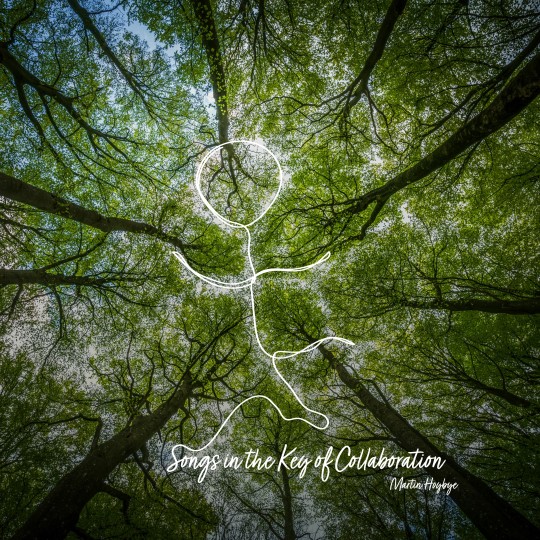
Nya 10-spårs albumet “Songs in the Key of Collaboration” från Martin Høybye är ett soundtrack till en lång resa av interkulturellt samskapande och forskning. Albumet släpps 3 maj via Songrise Produktion. “Prompted by a serious water crisis in Cape Town, I set out to explore songwriting as a response to anthropogenic environmental impact, broadly speaking. The aim was to both explore how songwriting might shed light on lived experience, and to develop songwriting as a research practice, by making songwriting accessible to others and collaboratively share stories in this way”, säger Martin Høybye ”Songs in the Key of Collaboration" är en ny Songrise-produktion som släpps 3 maj 2024 genom Songcrafter Music. Albumet producerades av Dennis Ahlgren, och är en del av Martin Høybyes konst- och praktikbaserade doktorsavhandling ”Songs in the Key of Collaboration - Engaging with Anthropocene moments through personal and collaborative songwriting," (Aarhus University, 2023). Fem år senare ser han tillbaka på en uppsjö av möten i det projekt som gav honom en doktorsexamen från Aarhus Universitet 2023. Upplägget var inspirerat av konceptet "antropocen" - en term som antyder att mänskligheten har blivit en kraft som utövar global geologisk påverkan och skapar en framtid som inte alls är den vi hoppas på. “These crises will continue to impact the planet for generations to come. Droughts, floods, sea level rise, wild weather events, and resulting changes to sense of place and identity will follow. We may find ourselves grieving the loss of certain animals and plants, the loss of stability and familiarity. We may indeed experience a feeling described by environmental philosopher Glenn Albrecht as solastalgia – when we feel homesick yet are still at home,” säger Martin Høybye Låtskrivandet fungerar som ett svar på den miljöpåverkan som han kallar "antropocenens överväldigande". Låtarna har skrivits i två olika miljöer. Under 2019 arbetade Martin med att mäta olika erfarenheter av miljöproblem i efterdyningarna av Day Zero-vattenkrisen i Kapstaden. Den andra miljön var Covid-19-pandemin i Danmark 2020–2021. Låtskrivarsamarbetspartners har kommit från Sydafrika, Danmark, Demokratiska republiken Kongo, Zimbabwe, Somalia, Ghana, England och Sverige. Tio av 35 låtar är presenterade på albumet. De omfattar möten mellan känslor och idéer från olika människor, länder och levnadssituationer. I samband med albumet släpps videon till låten “Dream of the Anthropocene” som ställer frågan om hur vi ska närma oss varandra när världen är i kris.
“Working with a team of artists and practitioners, I will work to spread this approach more broadly. To inspire others to share their practice, share their art. A song is a drop in a very big pond, but I believe in ripple effects and taking action by sharing ourselves, our experience, and knowledge. That may sound radical, but I believe inaction and non-sharing is actually more radical,” säger Martin Martin Høybye har släppt sju fullängdsalbum, senast "The Hourglass Sessions" från 2019. Han har skrivit låtar i samarbete med människor i Sydafrika, DRC, Zimbabwe, Somalia, Ghana, England, Sverige och Danmark sedan 2018. Martin Høybye har även skrivit två musikrelaterade böcker (2010, 2016). Tidigare släppta singlar är “End of the World”, ���Where the Water Was”, “Freedom Is a State of Mind,” och “We Can Change.” Diverse lovord om Martin Høybye: 'Årets låtskrivare' – SongIsland Hederspris – Danish Songwriters Guild Danish Music Award-nominerad (Årets låtskrivare) Danish Music Award-nominerad (Årets album) Vinnare av Unison Songwriter's Competition Flera finalistplaceringar och hedersomnämnanden, (USA Songwriting Tävling, Internationell låtskrivartävling, The Great American Song Contest, We are Listening). För mer information om Martin Høybye https://xn--martinhybye-mgb.dk/co-write-with-martin/ För frågor kontakta: Anette Ståhl – Enmusa Music tel: 0707 180120 [email protected]
0 notes
Photo

1 note
·
View note
Text


🗡️🍷✨
#fave murderwife and her simp king#jude duarte#cardan greenbriar#jude x cardan#jurdan#the cruel prince#the wicked king#the queen of nothing#the folk of the air#holly black#fanart#solastalgia art#bookblr#digital art#illustration#tcp#tfota art#judecardan#tfota
2K notes
·
View notes
Text
there's a tunnel in brisbane under the city called the clem 7. its name reminds me of the halsey song, clementine, but really--when you're in it it feels like travelling through space. it's too expensive usually to go through by car, but if you're travelling to chermside from the south there's a bus that takes you through it for $3.64 and you bypass the hustle of the city. now my boring old commute feels like that same kind of wonder--something i never thought i could feel about the bus ride I've done thousands of times again and forgot I ever did. i'm travelling through space and time, or is it in my own head, places and memories I thought I forgot coexisting all in this moment, all in the notes of this song?
i'm 16 and in love for the first time, and it's consuming me, i'm feeling too much and i have homework to do and i can't remember the last time i slept until sunrise. listening to the mouth of the river on repeat the way home from year 11 camp, not sure if i'm awake or not, the bus ride feels like a dream. brisbane is the one city that doesn't move on ever; all the people i connect to it and memories, happy and sad, i've lost from my teens or never gotten a chance to process, all the people I connect to them have left the city. i forgot that feeling. i remember it now.
sitting in my bed trying to study, i do urban design but i study it online, my lecturer is standing in pyrmont making a video and we're learning about the inner west. about the connection to the land of the Indigenous people of greater sydney, and not for the first time i think, i'm not indigenous, but i feel it too. and i feel the fragmentation, my sense of home in different places, different dysfunctional places, i never did find a place where i'm able to get my needs met. hopefully i get to create one one day. she's talking about the evolution of landscape through colonialism and whatever else, all i hear her saying, is the city tends to move on all the same. sydney always did. i knew there was hope and i knew the nostalgia was lost when they built the train bridge over the georges river at east hills. and i have something to do with my life and a defense against the frustration of traffic i never did learn to handle, but at what cost? in undergrad we learned the term 'solastalgia'. and i know what it is for me and i can't imagine how far away usamerica is or having to go there to create. i create all the time. i don't get anything else done.
where is home? my two cities are only a train ride apart, or a short flight. but i've never seen the homes of my ancestors. they live in me but i don't know them, i don't know their land. i want to. i want to connect to places in lots of places. i want to integrate them all into who i am. i want to discover things about myself i see in other people like i do even with more distant family here. i need to make peace with my high school self too, how do i go about that? how is it a song that's putting the pieces of me together and it hurts while it does, but maybe i can study the ways in which the city moves on meanwhile. cities are my art and it always hits home when i see them represented in my favourite form of communication, music. it's like someone photocopied my brain. God, perhaps. maybe I am the photocopy. and i'm okay with that. i'm okay with learning from what other people create. it's what i do i guess. but 16 year old me? who discovered urban design for the first time without knowing what it is? am i ready to face her? i have to. or i won't ever concentrate on anything else
#this is what listening to shakes does to me is all i can say#writing#i really don't know how to tag this
7 notes
·
View notes
Text
Thank you @abiaswreck for tagging me!
Tag Game: Put a playlist on shuffle, list 10 songs, and then tag 10 people.
Just Pretend by Bad Omens
Domino by Stray Kids
The Night That We Met by Lord Huron
Fire on Fire by Sam Smith
Happy Pills by Weathers
Project by Chase McDaniel
About Damn Time by Lizzo
I Ain’t Worried About It by One Reuplic
Rock Show by Halestorm
Roundtable Rival by Lindsey Stirling
I’m sorry if you have already been tagged by someone else!
@tasteleeknow-new @mxxndreams @starrgaziinggg @yoongihan @skz-bb @thebangtancloud @solastalgia-art @freckledivy @ambivartence @hyunskizzz
4 notes
·
View notes
Text
ASPHALT FLOWER>CLAUDIA JAGUARIBE
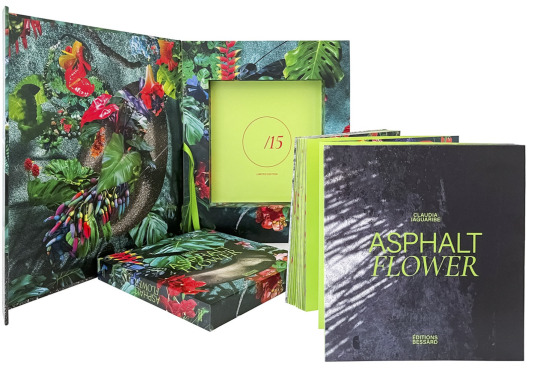
ASPHALT FLOWER (Éditions Bessard, 2022), obra mais recente da fotógrafa carioca Claudia Jaguaribe publicada na França, acompanhou a exposição Quando eu vi a Flor do Asfalto entre agosto e setembro do ano passado na galeria Marcelo Guarnieri, em São Paulo. É um livro que, segundo o curador francês Marc Pottier, radicado no Brasil e na França, nos faz lembrar do filósofo australiano Glenn Albrecht, autor do livro Earth Emotions: New Words for a New World (Cornell University Press, 2019).
Albrecht conhecido pelo seu conceito de “solastalgia* oferece aos seus leitores uma visão radical do mundo para sairmos da crise ecológica, diz o curador. Refere-se assim à perda de um lugar natural único, vítima das transformações provocadas pelo nosso desenvolvimento exponencial. Uma forma de "saudade", uma mistura de melancolia, nostalgia e esperança, sentimento tipicamente lusófono ou "saudades que se sente mesmo quando ainda se está em seu país." É assim, segundo este, uma questão evidenciada neste livro de artista feito por Jaguaribe.

A fotógrafa, no entanto, vem abordando estas questões há tempos como por exemplo em seu livro Quando eu vi (Editora Punctum, 2009) onde a natureza se faz presente em experiências cromáticas e na sua forma de apresentação, com imagens estruturadas em instalações, como em Asphalt Flower, que apresentam-se essencialmente correlatas entre publicação e exposição. Uma marca que se tornou frequente para a artista, vista também em livros e mostras mais recentes como No Jardim de Lina (Editora Tuí, 2018) e Encontro com Liuba ( Editora Tuí, 2019). ( veja abaixo links para reviews destes livros).
"Asphalt Flower", esclarece Claudia Jaguaribe, "revisita a ideia de paisagem como um jardim, um espaço de conexão entre homem e natureza onde é possível observar a dinâmica dos ciclos da vida (crescimento, floração e declínio) como um reflexo da sociedade que o molda. As imagens de flores sobrepostas que integram-se simbioticamente às formas asfálticas e nos mostram uma superfície que encapsula a natureza desde os tempos bíblicos e que não pode mais ser separada dela. O trabalho possui o formato de uma frisa composta por partes que, unidas, formam uma única imagem."
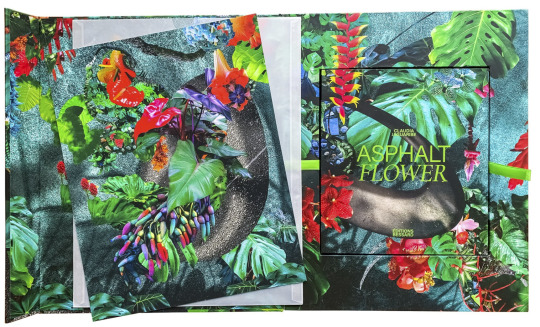
As imagens da exposição, de grande formato, criam uma espécie de dimensão peculiar que propõe um jogo ao leitor: procurar entender os layers sobrepostos habilidosamente pela artista. A transcrição desta "tridimensionalidade" só vista na mostra, ganha uma interpretação para o livro por outras articulações: no projeto gráfico por dois caminhos distintos ( textos e fotografias), estruturados pelo recurso do formato Leporello**, que permite de um lado ver o texto e de outro as imagens. Um artifício também utilizado em seus livros Sobre São Paulo ( Editora Madalena, 2014) e Entre Vistas (Editora Madalena, 2014), ambos, como em Asphalt Flower, com edições limitadas e numeradas, acompanhadas de prints em um box especial, além da edição normal.

Jaguaribe em sua longa trajetória altera satisfatoriamente e de maneira constante a ideia conservadora da exposição de arte, rompendo com formatos tradicionais e materiais usados, para além das impressões convencionais, ora em duratrans, ora experimentando assemblages, suportes esculturais, projeções de vídeos ou mappings (como em Entre Vistas), o que realmente produz um desafio para a transcrição em um livro. No entanto, as possibilidades gráficas arrojadas empreendidas em suas publicações sustentam por si mesmas essas versões como mais um bônus para o leitor que tenha visto as exposições.
Para os editores, "A relação entre a natureza e a humanidade é uma das questões mais importantes do século XXI. A incerteza do nosso futuro e os desafios para a nossa sobrevivência física e psíquica na Terra levantam questões ecológicas, sociais e artísticas que demandam uma urgência no seu tratar. O Brasil, país de dimensões continentais, possui características e estruturas de alto contraste que tornam tal situação ainda mais agravante. Se por um lado habitamos um território composto por grandes extensões de biomas preservados, por outro, testemunhamos o aceleramento de sua devastação."

Não deixa de ser uma representação artística de longa data encontrada na obras de grandes artistas por diferentes motivos, não apenas estruturais ou filosóficos, que vão desde as pinturas do pós-impressionista francês Henri Rousseau (1844-1910) em suas cenas das florestas- as quais eram imaginadas, até mais contemporâneos como o fotógrafo holandês Ruud van Empel, na qual as estampas da flora são uma recorrência no seu trabalho, assim como nas de Claudia Jaguaribe, respaldadas pelo processo digital, que aliás é um dos objetos de estudo do curador Marc Pottier.
Outras possibilidades dadas por Pottier, fazem referência a captação das imagens pela fotógrafa nos jardins criados pelo seu conterrâneo, o pintor e paisagista Roberto Burle Marx (1909- 1994). Para ele "A coleção de obras da série "Meu Jardim Imaginário" mostra o encontro da flora exuberante com o ambiente urbano. As fotografias criadas celebram a excelência e a força do exotismo brasileiro onde estas são a base deste trabalho em seus jardins híbridos sobrepostos a espaços urbanos e florestas que sofreram danos ambientais, cujas cicatrizes podem ser vistas e para as quais "Asphalt Flower" traz uma nova expressão.
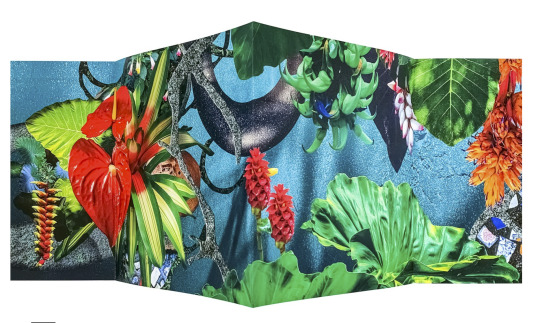
Na utilização do contraponto, as vívidas imagens da flora captadas por Jaguaribe, como nas pinturas de Rousseau, provocam uma interação temática. Para ela, entre a rigidez do asfalto (o resultado do uso de um material fóssil que ambientalistas tentam extinguir), que aqui é tomado como coadjuvante aproximando a obra não somente da questão ambiental mas também filosófica, assim como os personagens do pintor emaranham-se em meio a floresta. O resultado é que flores, folhas e o asfalto, em recortes trabalhados digitalmente, criam um "maravilhoso emaranhado", citando a arquiteta Lina Bo Bardi (1914-1992) ao subverter a idéia ocidental da linearidade no tempo ou do próprio formato Leporello do livro.
A fotógrafa, com imagens exuberantes propõe uma outra realidade que antagoniza com a que de fato vivemos, como o desmatamento sistemático da Amazônia, que, como diz Marc Pottier, leva-nos à perda do discernimento. As imagens sobrepostas que adentram o corpo do asfalto recortado em forma de plantas, passam do cinza às cores neon artificiais e saturadas. "Ela nos oferece um triunfo lúdico do híbrido celebrando as núpcias de Eros e Thanatos." completa o curador.
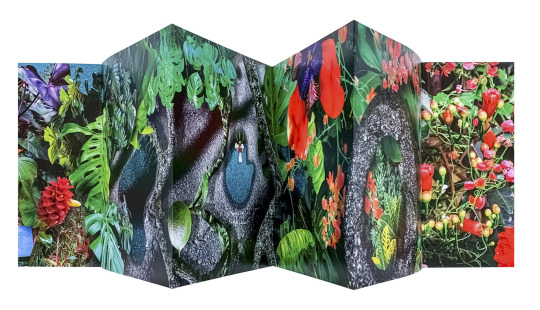
Claudia Jaguaribe trata seus livros como obras de arte. Asphalt Flower é uma grande foto única que no decurso do seu formato gráfico desdobra-se e retoma sua ideia de um jardim imaginário, de uma natureza artificial ou "segunda natureza" na qual ela trabalha há muitos anos. "Seu canto é o das sereias que despertam sua consciência para o futuro do mundo", pensa acertadamente Pottier."Há muito ela acredita que os jardins expressam melhor o que conecta os seres humanos e a natureza." Ela os vê como um lugar icônico, com os tais ciclos da vida, já mencionados acima -crescimento, floração e declínio- e os enxerga como um reflexo das sociedades que os moldam. "A sua composição fotográfica situa-se entre a ideia da ruína de um mundo que parece caminhar para uma catástrofe natural e um futuro ao qual empresta sempre uma força de resistência e resiliência."
Asphalt Flowers, como notamos em quase toda a obra da fotógrafa, trafega na ideia mais contemporânea do imbricamento entre uma estética do sensível e da beleza, que configuram o que chamamos de arte, contradizendo a visão aristotélica em que esta última se contrapõe a práxis, uma vez que tanto a beleza quanto a sensibilidade neste caso, unem-se no compromisso com a "verdade" ao despertar- mesmo que subjetivamente, em quem entra no mundo de suas fotografias as emoções que nos levam ao exato sentido preservacionista do qual o mundo está tão carente.
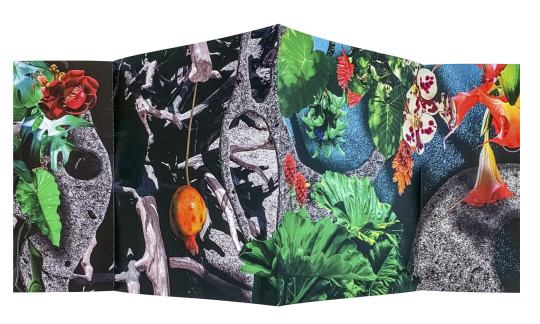
Imagens © Claudia Jaguaribe. Texto © Juan Esteves
Infos básicas
Imagens e conceito: Claudia Jaguaribe
Editora: Éditions Bessard
Tratamento de imagem: José Fujocka
Design: Mariana J.Lara Resende
Consultoria artística: Pierre Bessard
Texto: Marc Pottier
Edição bilíngue Francês-Inglês e numerada de 500 exemplares.
* Solastalgia é um neologismo, formado pela combinação das palavras latinas sōlācium e a raiz grega -algia, que descreve uma forma de sofrimento emocional ou existencial causado pela mudança ambiental. É melhor descrito como a experiência vivida de mudança ambiental percebida negativamente.
** Leporello é um formato gráfico que lembra um acordeon. O nome é oriundo do personagem homônimo da ópera Don Giovanni, do vienense Wolfgang Mozart, que estreou em 1789. Leporello era empregado de D. Giovanni, e fazia suas anotações em um papel dobrado como um acordeon.
Leia aqui reviews sobre livros de Claudia Jaguaribe:
Entre Vistas -https://blogdojuanesteves.tumblr.com/post/104279483161/entrevistas-de-claudia-jaguaribe
Encontro com Liuba - https://blogdojuanesteves.tumblr.com/post/185064246616/liuba-wolf-nasceu-em-sofia-bulg%C3%A1ria-em-1923-com
Beijing Overshoot - https://blogdojuanesteves.tumblr.com/post/173964568616/beijing-overshoot-claudia-jaguaribe-beijing
para adquirir o livro : www.editionsbessard.com
Saiba mais sobre Claudia Jaguaribe em www.claudiajaguaribe.com.br
Saiba mais sobre a galeria Marcelo Guarnieri:
https://galeriamarceloguarnieri.com.br/
3 notes
·
View notes
Text
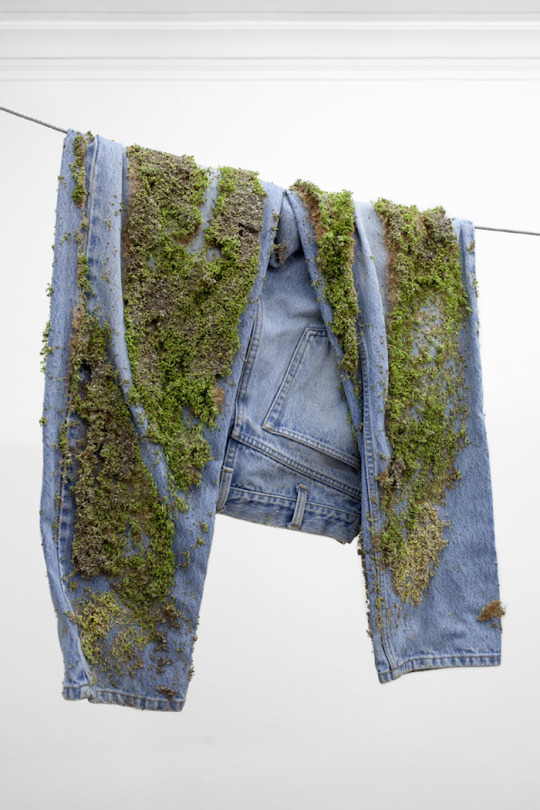
SOLASTALGIA - Bea Fremderman - Dismagazine
Do you experience this feeling of dread in relation to ‘eco-anxiety’ on a daily basis?
I think my eco-anxiety has transformed into eco-paralysis. Meaning that I know the ecological problems that we are facing are larger than what we can control and I’m really unsure what to do about it on an individual basis. Changing my light bulbs, recycling and taking public transit can only do so much at this point. Only a much larger, top-down change must happen in order for us to prevent our planet from warming further.
How do you see your work and art practice in relation to the feeling that the direction the world is moving is beyond our control? Is it born out of hopelessness or hope?
I think my interest is born out of hope. Foreseeing or hoping for an apocalyptic ending is really a deep desire for a radical societal change.
What’s it like to work with materials that seem to corrode with time?
I knew I was working with ephemeral materials when I started the project and part of the process was seeing what would happen in time with the objects. What I found interesting is that I was using materials as metaphors for how nature takes over humanity and in the end nature did in fact take over the work and did what it wanted with it. The chia on the clothing died; the fruit dried causing the sutures to loosen up or tighten depending on the fruit; mold grew on the lint bowls and finally the brick wall sprouted enough cherry radishes that it uprooted the wall and partially collapsed. I knew the exhibition was going to change and there was nothing that I could do about it. That really adds to the show. Change is part of it, decay is part of it. Instead of seeing these changes as elements that take away from the work, I see them as an additive-process.
15 notes
·
View notes
Photo









Madeline Tonzi’s “Life on Mars” at Hashimoto Contemporary SF.
Opening virtually on Saturday, November 7th, 2020 at Hashimoto Contemporary in San Francisco, California is artist Madeline Tonzi’s solo exhibition, “Life on Mars.”
Blending delicate organic forms and crisp lined architectural structures, each of Tonzi’s surreal paintings create a peaceful landscape that exist beyond time.
Glen Albrecht's concept of Solastalgia, a feeling of longing or mourning from the loss of ones environment and sense of home, has been a longstanding touchstone in Tonzi's work. A palpable sense of reverence and love for the natural world can be found throughout the artist's work. Tonzi states, "Specific colors and shapes symbolize the changing climate and its affects on the psyche in connection to our relationship with land. Florescent red bars throughout my paintings serve as a metaphorical thermometer, reminding us of the rising temperatures and impending catastrophe that are already upon us."
Tonzi's Santa Fe roots can be found in her sunrise color palette and the forms strewn across her desert landscapes. Reflecting on the year's isolation and the wildfire induced red skies across the Bay Area and west coast, the artist "underscores how surreal this experience we are living through is, and to remind us of the importance of protecting what we love, while extending the exploration of boundaries and perceived freedoms within." Each piece is a portal into a scene that exists as a fond memory of place, the current state of the world and a hopeful look to the future.
-
Be sure to follow Supersonic Art on Instagram!
95 notes
·
View notes